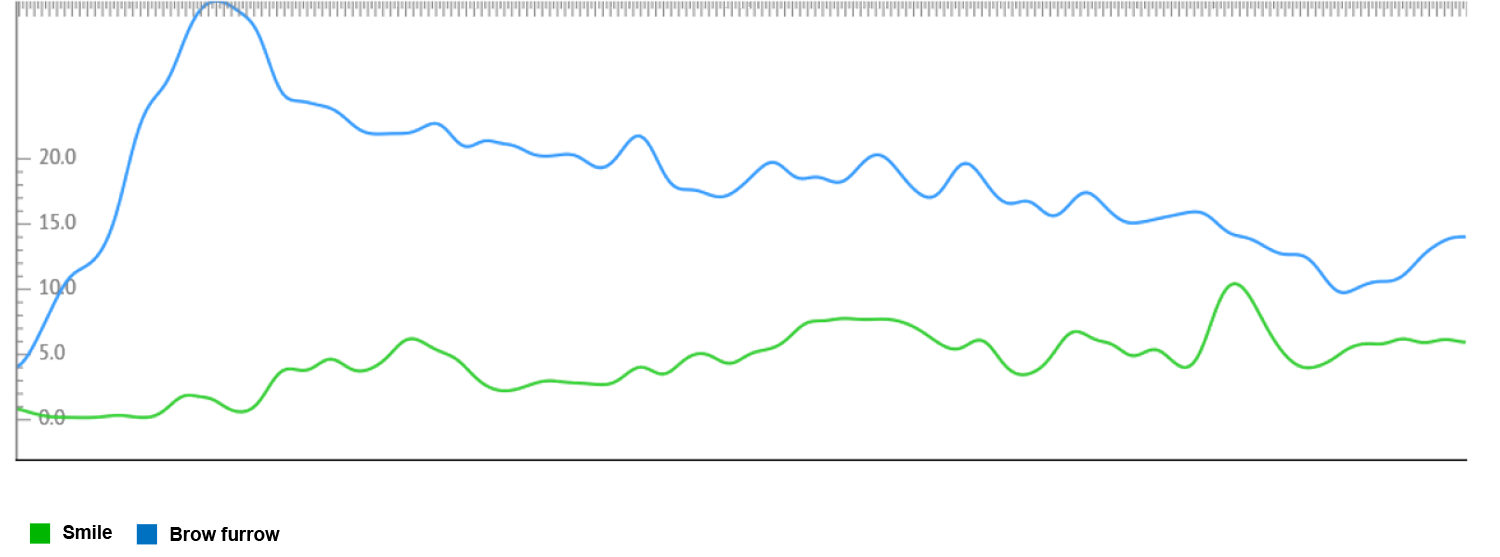It is easy to underestimate the importance of TV advertising until you realise that the largest internet companies are also the biggest advertisers on TV. Amazon, Ancestry, Audible, and other digital natives invest heavily in TV advertising because they know it can deliver a great return on investment. Analysis of Kantar BrandZ finds that when a strong brand proposition is combined with great advertising, brand value can grow by as much as 177%.
But creating effective TV advertising is not easy. Nobody watches TV to see the advertising. This means that TV executions must be crafted to overcome that indifference, from the initial idea right through to the final execution. Effective TV ads are the ones that earn attention and deliver a memorable and motivating impression of the brand.
Going from average to great can improve returns by 32%
There is only one way to really know if your execution is on track for success. Check how your target audience responds to it. Ad testing provides that all important feedback and helps guide the development process, provided it is not left to the last minute. Analysis of a subset of Kantar’s Link database of 230,000 ads finds that if you improve an ad’s creative quality from average to great the sales response improves by an average of 32%, with the best producing up to 4.3 times more than the worst performers.
But testing only makes a difference when there is time to react and respond the findings. Testing too late can waste far more than just production costs. Witness the case of one advertiser whose TV ad featured a well-known, and expensive, celebrity. Tested shortly before broadcast, there was no going back when the research signaled a complete lack of effectiveness. The cost of production and the celebrity’s fee were compounded by the wasted media buy and the opportunity cost of not connecting with buyers in a competitive marketplace.
Each stage of development offers potential for improvement
Of course, testing late is better than not testing at all, edits can still be made, music can be changed, and title cards added. However, this cannot make up for more fundamental plot deficiencies or ideas that simply fail to resonate.
Video advertising effectiveness relies on holding viewer attention while the storyline plays out. Lose that attention and the ad will prove ineffective. Take the example of a cleverly scripted ad intended to deliver a humorous story. Unfortunately, as the facial coding frown and smile traces below demonstrate, viewers struggled to understand the initial scenes. That lack of understanding carried over to the rest of the video, undermining the intended humour.
Understanding emotional responses

Unfortunately, it is difficult for those directly involved in development to anticipate where attention might be lost, both the client and agency teams know the script far too well.
From insight to airing, Heineken’s ‘Cheers to all’ gets it right
Successful TV advertising starts with human insight, something that resonates with the audience and is easily recognised. That is exactly what Heineken did when it created ‘Cheers to all’ with the intention of flipping the perception that beer is only for men. By talking to bartenders and those they serve Heineken identified a prevalent bias, gender-related drinks stereotypes. All too often, men got served beer and women cocktails, irrespective of who ordered what.
Heineken, Cheers to all, USA
To ensure the execution would hold true to this insight and keep the message light-hearted Heineken then tested the ad with Kantar as an animatic. Testing at this stage also allowed the team to check that the idea would resonate well with drinkers. As Maud Meijboom van Wel recounts, given the beer industry’s track record of targeting men with its advertising, there was concern that the execution might evoke a negative reaction. The ad testing dispelled this concern and provided guidance on how best to execute the final film. A last round of testing confirmed that the ad would be effective across a range of markets. In fact, because the ad challenged drinker stereotypes in such a lighthearted and empathetic fashion, ‘Cheers to all’ came top of the Kantar Creative & Effective Awards for 2021.
The benefits of testing differ by development stage
To emulate Heineken and get the most out of your advertising it is important to test early, and test as needed throughout the development process. Your target audience is the only audience that matters and testing at critical junctures in the ad development process will allow you to get feedback from that audience, so you can iterate and optimise and get the most out of your creative.
The importance of testing at different stages
Benefit |
Questions to be answered |
|
|---|---|---|
Rough |
Understand whether and how the execution can deliver on the job to be done |
Is the proposed execution likely to earn attention, communicate the desired impression, and link it to the brand? |
Revised |
Identify elements to improve during production of the final execution |
How can the ad be optimised to deliver maximum ROI? Which scenes can be tweaked to go from average to great? |
Final |
Last chance to ensure the execution stays true to the original insight and to fine-tune it |
Does the flow of attention highlight the brand and the message as well as it should? |
Testing at relevant stages of development really helps to improve the overall performance of an ad. Testing an ad at two stages of development (for example animatic and finished film) can increase advertising impact by 38%. And testing at three stages can have even more impact. After testing the early-stage animatic, then the winning storyline and finished film, one of our clients created one of the best performing ads in the category and country – in the top 2% by breakthrough potential. And the good news is that testing doesn’t need to slow you down. Automated testing on Kantar Marketplace can give you results in as few as 24 hours.
So why miss out on the opportunity to make your TV advertising even more effective? We’d love to talk to you about how you can optimise your TV advertising with a testing programme designed to ensure your ad will be as effective as possible.
At Kantar, we love great creative, and each year we celebrate the best ads we test for our clients and mine our databases to find out what makes them stand out. Watch our on demand webinar to discover the winners of our 2022 Creative Effectiveness Awards and find out how to excel in TV (and other advertising). And please get in touch to discuss how to get the best return on your creative.

